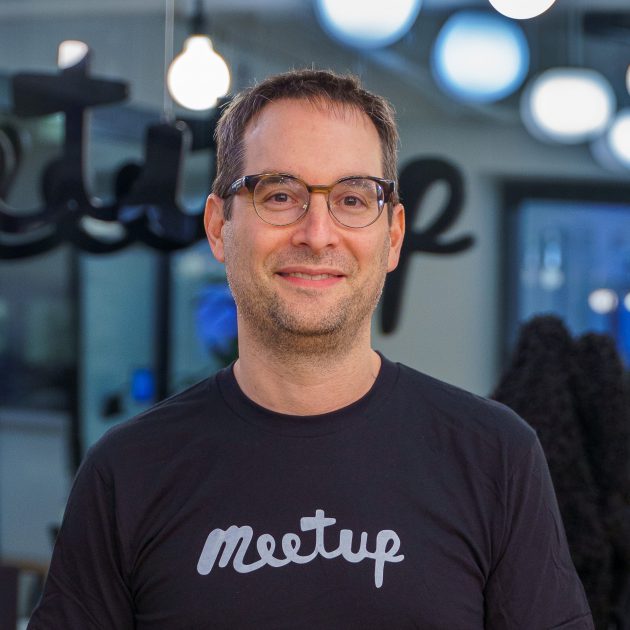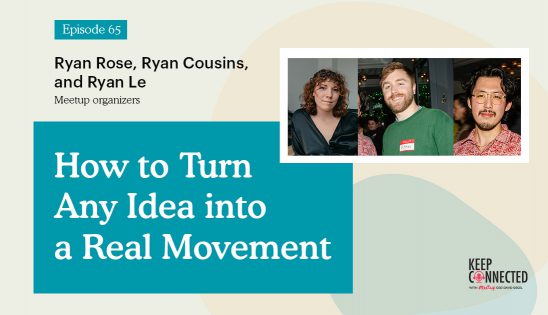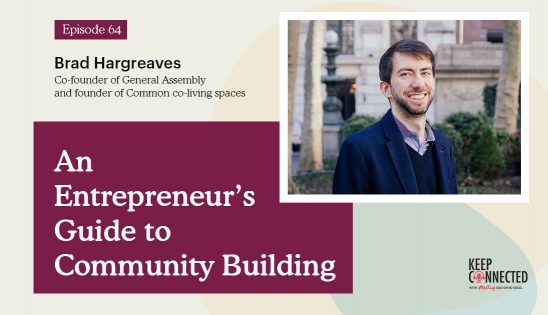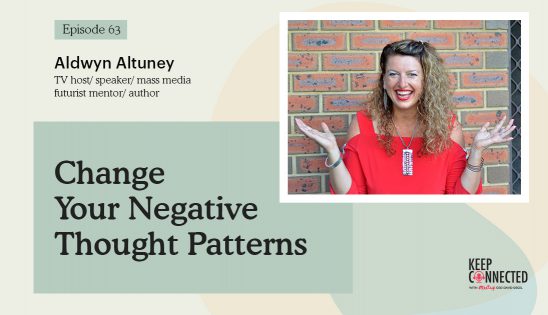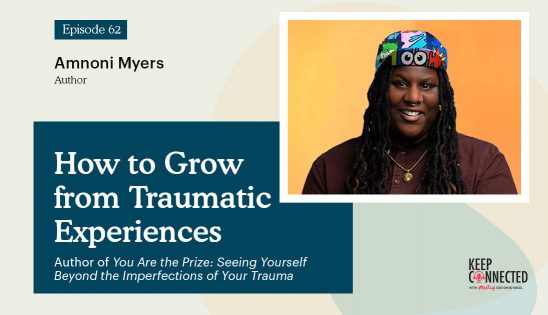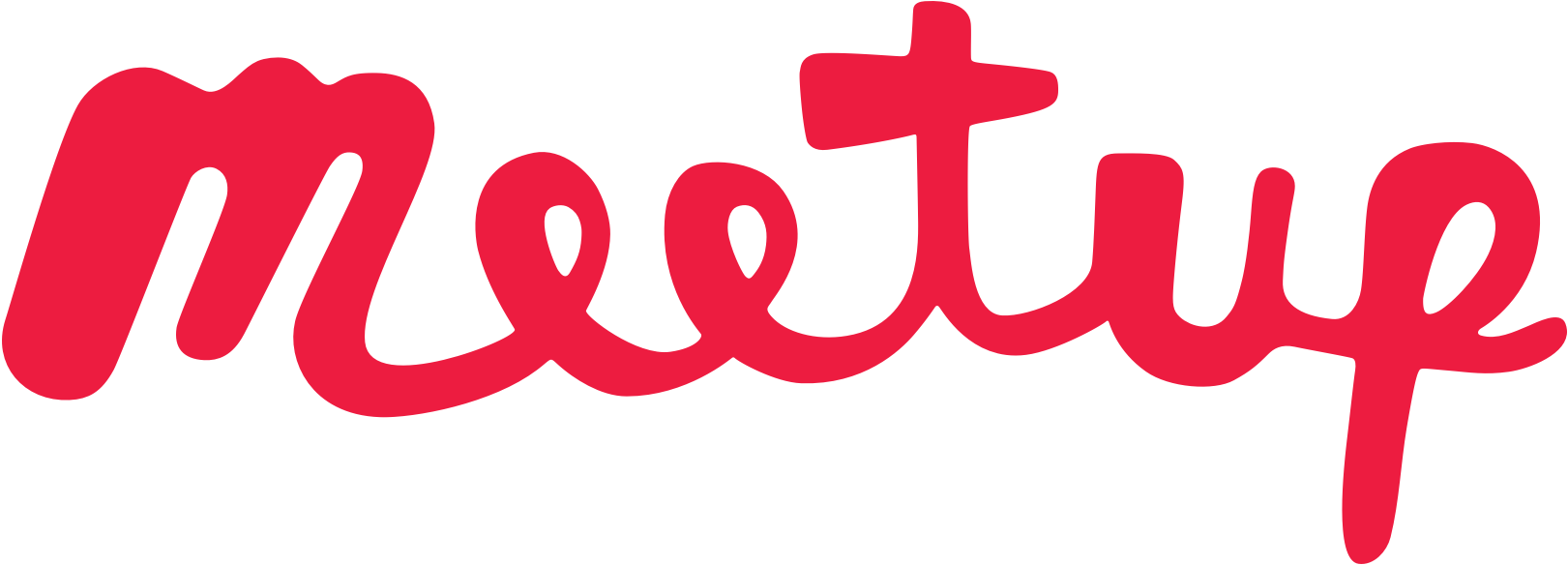From investment banker, to four-time CFO, to operating partner at a top venture capital firm, to board of directors member, to lecturer at Stanford University—Jeff Epstein has done it all. Over the years, his experience, contacts, and willingness to both teach and learn have helped him become what David refers to as “the trillion dollar connector.” In fact, Jeff has facilitated nearly 9,500 high-level business connections, leading to hundreds of executive hires, sales, and startup investments. He and David reflect on their 20 years of friendship, then reveal some insider knowledge about executive leadership. Topics include the “win-win-win” power of professional introductions, why the best CEOs make as few decisions as possible, what a board of directors actually does, and more.
Show Notes
In this episode, we have Jeff Epstein, an operating partner at Bessemer Venture Partners, one of the top venture capital firms. If you are a business person looking to network, build relationships, and connect, this is the show for you. Happy connecting.
—
Welcome, Jeff Epstein, to the show.
It’s great to see you, David. Thank you for inviting me.
Sometimes I only know people the moment the first time I meet them, and sometimes I know people for many years. Jeff and I have known each other since 1998, the early DoubleClick days, which was many years ago, amazingly. He hasn’t aged a bit. Let me tell you a little about Jeff. Jeff is a four times CFO, DoubleClick, Nielsen, and Oracle, among the different companies. He’s a board member at Kaiser Permanente, Twilio, Booking Holdings, and a load of other places.
He’s now been an operating partner at Bessemer, one of the top VCs. He’s even a professor at Stanford. If you don’t think that’s impressive enough. I have to ask this question. You’ve had a lot of stuff. Maybe that’s a way of saying you’ve been around for a few years. What has been the most meaningful stuff for you among all those different places? Let’s hear about that.
Meaningful can have different meanings. Probably the most important for my career was my first chief financial officer job at a television programming company called King World, which distributes Wheel of Fortune, Jeopardy!, and Oprah Winfrey. I was an investment banker. I had never worked in a finance department. My client had an accounting CFO, and they wanted a Wall Street CFO, so they invited me to be the CFO of this public company.
It’s like another New York Stock Exchange. I thought about continuing as an investment banker or going essentially in-house. I felt that it was a better move for my personality and skills to be in-house. I said yes and became the CFO of King World. I was there for six years. The company tripled in value. That set me on my career over the next 25 years to be CFOs of these other companies.
Pat Sajak and Vanna White were at Wheel of Fortune and still back in that time.
They were. It was incredible. Pat and Vanna went on air in 1984, and Jeopardy with Alex Trebek in 1985. They were very quickly the number one two shows in ratings in daytime television, and they’re still the number one of two shows in daytime ratings, which is extraordinary.
What an experience. It is complicated to go from a banker to a first corporate gig as a CFO. What were some of the surprises for you, the things that you thought, “I got this,” and you’re like, “Corporate world is actually very different than the banking advisory world?” What was a surprise there, positive or negative, or both?
There are three parts to being a CFO. There’s the Wall Street part raising money and dealing with investors. There’s the analytics part, which is forecasting, budgeting, and trying to understand what’s going on in the business. There’s the internal accounting control part. Having come from Wall Street, I felt pretty confident in that part. I had earlier in my career been a consultant at the Boston Consulting Group, so I felt pretty good about the analytic part, although I had never done a budget and had very little experience in the accounting control site. I had taken accounting classes, but I didn’t know that. Here’s the first thing I did.
There’s a fellow named Len Spilka, who is a terrific executive. He was the CFO. They were hiring me above him. He had been at one of the big four accounting firms. My first decision was to persuade Len to stay because if he left, I wouldn’t know how to do his job. I said, “I’ve never been a CFO before. You’ve been a CFO. You understand accounting. Could you please help me out? We’re changing your title. You’re not going to be the CFO, but you’ll still have a lot of responsibility. Together, we’ll be a team and help King World thrive.” I was very fortunate that he said yes. We worked together for the entire time I was there. We’re still friends now. That was a terrific decision and a terrific outcome.
It speaks to your character but also Len’s character. The fact that he was able to stay on and thrive and respect you and the company in that situation speaks to a lack of ego and humility, which certainly was probably a basis for your collaboration.
It was. It worked out well.
It’s a great story as a lead. I didn’t know what you were going to say, but I’m glad it worked out because you came into a CFO job pretty green in terms of corporate experience and building a budget. You knew what it was like to have gaps and need mentoring and people to work and connect with. What our readers are about to read is from a person who has probably connected at an executive level, certainly in tech companies and more people than probably nearly anyone else in the world.
I’m not kidding, Jeff. You are the connector extraordinaire. I’m not going to share the spoiler of how many people you’ve connected with and what you do. To me, it hearkens back to that first CFO job of yours in many ways, where you needed those connections, and now you want other people to learn from them as well. Tell us if that’s true or not, and a little more detail about why you are such a connection extraordinaire at the executive level.
First, I’ll give you the philosophical background and tell you the mechanics. The philosophical background is business is a team sport, even for the most successful entrepreneurs, the Elon Musks of the world. He didn’t build Tesla by himself. He’s got thousands or tens of thousands of employees. When you’re trying to do anything with a group of people in an organization, the people who are most affected ask for help.
Initially, people, especially when they’re junior and young, think that asking for help is a sign of weakness and a sign they don’t know something. I admire people who ask for help with things I wouldn’t expect them to know. If I’ve hired an accountant to close the books, tell me, “I don’t know how to close the books,” and tell them how to do that, that’s a problem because they’re not doing their job.
If they’re doing their job and need help in something else adjacent to it, it’s very useful for them to ask for help. The question then is, “Who do you ask help from?” You have to have a connection. It’s all tied to people helping each other out. Silicon Valley, in particular, has this culture of a lot of companies helping each other out. People probably move from company to company more frequently in Silicon Valley than in other industries. They’re used to competing with someone today, and tomorrow, they’re with the same company, and the next year, one is a customer of the other one. There’s a terrific culture of collaboration in Silicon Valley.
It’s a different dynamic to ask for help from someone outside the company than someone inside the company.
There are two kinds of reaching out. One is asking for help, and the other is offering help. Your original question was why I do all these connections and why I offer to help. What happened was I worked for 30-plus years, and several years ago, when I left Oracle, I was fortunate they didn’t have to work full-time, but I didn’t want to retire and play golf every day or become a carpenter or something. I wanted to stay in business. I said, “What should I do?” I was on one board of directors. I was now on the Booking Holdings board, and I enjoyed that.
There are two kinds of reaching out. One is asking for help, and the other is offering help.
I continued to accept invitations to join boards. I started investing my own money in early-stage venture deals because I thought that if I wrote a check, I would pay a lot more attention. That certainly proved to be true. I joined Bessemer Venture Partners part-time as an operating partner to work with our portfolio companies. I then accepted an invitation to teach at Stanford. Over the years, one thing led to another. Now I’m busy most days. I don’t have a full-time job, so I don’t have a day-to-day responsibilities.
I think you have a full-time job. It’s pretty much a connector to all these people. Keep going, please.
I have things to do every day, but I don’t have deliverables. When you’re a CFO, you have quarterly earnings calls. You have budgets and things like that. I go to a board meeting, we talk about what’s going on, and then I say, “I’ll see you next quarter. Good luck, guys.” There are fewer requirements than what I do now. The point about connections is that I often run across people who have a challenge. It’s someone who’s looking for a job or recruiting and looking for a candidate or a company that’s trying to sell a product to a certain kind of customer or a company that’s looking for funding for the next round of venture capital. I know people on both sides of the equation. My view is that most of the time if it’s a successful introduction, I’m doing a favor for both sides. I always do double opt-in introductions.
Explain what that means for everyone.
If a company that I know says, “I’ve raised my series A. I’m getting ready for my series B. I have relationships with 3 or 4 investors. Jeff, you know a lot more venture capital firms. Who do you think would be a good fit for us? Could you introduce us?” what we’ll do is sit down and say, “Here’s a list of 50 different firms. Here are the ten firms that might be best.” I would say I’m happy to reach out to them. I don’t just send a note to the investor and say, “Here’s a company. You should meet them,” because it’s creating an obligation that they may not like.
What I’ll do is send some information to the investor and say, “Here’s a great company. I think they’re good. I might personally invest. I know them. It will be worth your time to meet them. Would you like to meet them?” That’s the double opt-in part. In my experience, maybe 10% of the time, people don’t reply at all because either they’re busy or I met them ten years ago, and they don’t even know who I am. Ten percent of the time, they say, “No, it’s not a good fit.” If I’ve done it right, 80% of the time, they’ll say, “Yes, I’m happy to meet them,” and I’ll follow up with an introduction.
Eighty percent is a lot better than most people’s hit rates. It probably speaks to the relationship that they have with you and their willingness to meet with someone who you think is the right person to meet with. Spoiler now, what is the total number of high-end connections that you have facilitated through the years?
In getting ready for this show, I went back and looked it up. When I started to do these introductions, I didn’t write them down. After a while, I said, “I wonder if these are working. If they were not working, I was wasting my time. Why should I keep on doing this?” I started writing it down. I keep a Google sheet for every introduction. I’m up to 9,440, which started essentially in 2012. It’s been about several years. I had a handful that I recorded before that.
The first year, I did 50. In the second year, I did about 400. Every year since then, I’ve done 800, 900, or even sometimes over 1,000 a year. I wanted to know whether they were working or not. Sometimes people will tell me, “Thank you very much for introducing me to that company. They hired me.” I’ve had 243 successes, which is a 2.6% success rate. I was wondering if 2.6% doesn’t sound like a big number, but it’s pretty good. I would’ve expected maybe a 1% success rate.
It’s about the number, not the percentage. Percentage matters. It’s both. We’re talking about, in actuality, the billion-dollar deals that have happened among those 243, CEOs that have been hired among those 243, and enormous partnerships that have existed between Fortune 500 companies among those 243. If you think about the famous book about Bill Campbell’s Trillion Dollar Coach, what they said is, “Think about the value that was created through Bill Campbell’s coaching of Facebook and Apple.” You’re the trillion-dollar connector because the number of market cap and value that has been created through the different major tech companies and healthcare companies you’ve connected is certainly in the multibillion of dollars.
I’m not sure it’s quite that high in terms of dollars. A lot of these are just introducing someone who gets hired, which is not billions of dollars. Often, they’re companies that are looking for investment and get investments. They might get a $5 million, $10 million, or $50 million investment. It’s meaningful to the people who get it. It’s helpful to both sides. I feel fortunate that I have relationships with both sides. What it does for me is it keeps me in the flow. If you have a job at a large company like Oracle, where you have hundreds of emails every day, and people are calling you, you’re in the center of the action. The day you leave, people stop calling.
There are many people who are highly connected and reluctant. I understand why they’re not proactive. That takes time, energy, prioritization, etc. Oftentimes, people are reluctant to make connections. What have you found as some of the reasons that keep people from making business and networking-type connections?
The number one reason is people feel they’re imposing on the other person. The second is it takes a fair amount of time and effort. The third is you have to know a lot of people in order to make the instructions. There are some people who don’t have that many contacts. If you came to me and said, “I’m a nuclear physicist. I’m looking for a job,” I wouldn’t know how to help you. If you come to me and say you’re a CFO and you’ve been an experienced CFO and are looking for a job, there are ten companies now that I know they’re looking for CFOs. If it’s within my circle of competence, it’s very easy for me.
The number one reason that keeps people from making business and networking-type connections is people feel they’re imposing on the other person.
Is there a fear either by you or by others that it would be a negative reflection on them if they bring someone for hire per se, and it doesn’t work? Do you think that people are reluctant to make introductions because it could have a negative impact on them as a referrer? Is that not part of the equation?
That might be. I wouldn’t refer people with who I don’t have confidence. That’s an awkward situation. Let’s say that I’ve worked with someone who was fired from their last company, and then they call me and say, “Help me get a new job.” What I’ll do is talk to the CEO who fired them, saying what was going on. I won’t introduce that person, assuming it was a performance issue. There’s an important curation element.
Are there any stories that you could share of companies, and maybe you’re willing to name if there’s a good example and not name if it wasn’t a great example, of an introduction that you made around fundraising, an executive hire, or something else that could bring the point home and give a couple of illustrations?
I serve on the board of a company called Vendr, which is a company that helps other companies track all the software they buy and helps them negotiate lower prices. I was introduced by Bessemer. Bessemer, unfortunately, didn’t invest. It turned out to be a great investment, and we made one of many mistakes. On the Bessemer website, we have the Anti Portfolio. This is one of the anti portfolios. I didn’t miss it because I met the CEO and said, “This is a great idea.” When I was a CFO, I would’ve loved to have had a service that could help me save money on software that I buy.
Now software is after people and rent. Software is probably the largest component of many businesses’ costs. I started by introducing them to Bessemer’s 200 portfolio companies’ CFOs. My work at Bessemer involves me working with all of our portfolio companies’ CFOs. I said, “Here’s this interesting company. If you’d like to meet them, I’m happy to introduce you.” Many of them said yes. I made the introductions. Within 3 months, 9 of them had become customers. That’s 9 of the 243.
For people who don’t realize, a sales cycle could take 6, 9, or 12 months oftentimes.
There’s a concept called product-market fit when you have a new product that fits the market, and everything works. We’ve all seen it with things like TikTok or Facebook when it took off from a consumer point of view. I have never seen this product market fit with a service that helps companies save money introduced to CFOs whose job is to save money. I said, “This is terrific. I want to be involved.” I then offered to be an advisor to the company. They brought me on as an advisor and asked me to be a member of their board of directors. I continued to make quite a few introductions. I personally was probably introducing more than 10% of all their customers in the first year or two. It worked out very well, and the company is extremely valuable nowadays.

That is a great ROI. One of the reasons I thought of you for this show is you have made not one but two different referrals to me for executive positions over the last ten-plus years, not since I’ve become CEO of Meetup for obvious reasons. You introduce me to the CEO of Shutterstock at one point. We had a great conversation. I was even given a job offer from Shutterstock and ended up deciding to work at IAC. You may remember that.
I also had a wonderful conversation with the CEO of Priceline. To be able to talk to these high-level people, it’s a testament to you and your relationship. You talked about being a board member. Not many people have ever spoken to someone who is a board member of the type of prominent companies like Twilio, Kaiser Permanente, Bookings, Priceline, and many others. What would surprise our readers? 4, 5, 10, perhaps 20 years out of college, they’ve never talked to a board member about the good, the bad, and the challenges of what it’s like to be a board member. What would surprise people?
I’ll start by describing the role of a board. A board member has a duty of loyalty and care. They have to be loyal to the company and be careful in terms of understanding the business when they make decisions. The question then is, “What are the decisions that a board member makes?” The most important decision is selecting or changing a CEO. Beyond that, the board is not the decision maker but is the advisor to the CEO on strategy, acquisitions, capital raising, hiring senior leaders, compensation programs, and things like that. If a board is making decisions, you’ve got a dysfunctional structure for a public company or a venture-backed company.
In a private equity-backed company, it’s a little different because the private equity firm controls the company. The private equity firm hires the CEO and the partners and is the direct boss of the CEO. In that context, the private equity firm is running the business. In public companies or venture-backed companies, the CEO is running the business, and the board is there to guide the CEO and replace the CEO if things go bad. The surprise that some people have is how few decisions a board makes. If a company is doing well, the board only makes one decision, which is CEO succession.
The surprise that some people have is how few decisions a board makes. If a company is doing well, the board only makes one decision, which is CEO succession.
What also surprises people is how few decisions the CEO even makes. If you’re a good CEO, you’re making as few decisions as you can and are hiring incredible people on your team to make those decisions. Similarly, if a board is making decisions for the CEO, there’s a problem likely with that CEO. That’s one surprise. What other surprises have you seen? Have you been surprised by the lack of alignment on boards, the mission orientation of a board, or any others? I’d love to pick your brain on that.
There are a couple of times when boards have conflicts. If you have a venture-backed situation, sometimes you have early investors and later-stage investors. Sometimes the later-stage investors have a preference where they might get a guaranteed 2X return or 3X return based on when they were raising the money. You then have fundamental conflicts of interest between the investors where some investors say, “I want to sell to get my 2X return,” and other investors say, “No, I think we should let it go longer because we need to have a longer return.” They’re not using their fiduciary duty as a board member.
They’re making these decisions based on their fiduciary duty as a general partner in their fund, which conflicts with the board. Their responsibility as board members trumps their responsibility as an investor. The first duty of a board member is loyalty to the common shareholders of the company, not to the LPs of their fund. Occasionally, you’ll meet investors who don’t understand the law and don’t act that way. Even if they understand the law, they still don’t act that way, and you end up with potential conflicts.
I know numerous CEOs that are subject to those conflicts. They have a board member who has a short-term horizon for personal reasons and one with a long-term horizon for personal reasons. They are stuck in between. It is one of the most painful experiences for a CEO to be stuck between fighting, disagreeing, and misalignment between board members. I won’t wish that on anyone because they feel like they’re a ping pong ball. That happens, unfortunately, more often than people do realize.
You talked about the transition from a banker to an operating role in a company, that first CFO job. Now I want to hear about Jeff Epstein 3.0, which is that transition from a CFO of Oracle, and I don’t know what top market cap company it is, to operating partner with a top venture capital firm. What did you expect it to be? How is it different from what you expected? How do you carve out your role as an operating partner when there’s ambiguity around a role like that? I certainly want to know more about your role, specifically in connecting CFOs in that. Sorry for that 3 or 4 part question, but take it any way you want.
When I retired from full-time work years ago, a friend of mine was a partner at Bessemer and said, “Why don’t we come over to Bessemer, hang out here for three months as an executive residence, and see if something comes up? Maybe you’ll join one of our companies, or we’ll figure out a way to work together.” I came by. I didn’t have any particular responsibilities. I met with many of our CEOs and CFOs that were portfolio companies and tried to be helpful. I thought initially what would happen is I would end up being the CFO coach where the CFOs would say, “I have these questions. Jeff, you can help me.” That has happened from time to time. What I found out even more valuable for the companies and the CFOs was for them to meet each other.
At the time, we had 100 portfolio companies. Now we have 200 portfolio companies. We typically would invest in a company with $5 million of revenue and growing 2X or 3X a year, so it’s going to grow to $10 or $20 million in revenue. If you’re the CFO of a $10 million company growing to $20 million in revenue, you want to meet someone who last year did exactly what you did. You don’t want to meet me, who did that many years ago. You want to meet someone who’s a little bit ahead of you on that journey. We had all these companies, but there was no easy way for them to meet each other.
We created the CFO Council, where we now meet in person post-COVID twice a year. Pre-COVID, it was four times a year on Zoom. Every quarter, we have an online platform where people ask each other questions every day. We make it very easy for any one of our portfolio company CFOs to ask questions, help out, and meet with other portfolio company CFOs. That’s the greatest value that we’ve been able to add.

It’s enormous because, as an investor, you look for companies that have scalable business models. The problem was that Jeff Epstein as a coach is not a scalable business model because it’s only one Jeff Epstein in terms of being able to advise CFOs. What you did was create a platform. I remember at one point that you had said to me something effective, “I only invest in marketplaces and platform businesses.” I remember you saying that. I’ve shared that with my students about the power platform business. You built yourself as a platform business in enabling CFOs from a couple of hundred different companies to build relationships with each other versus a one-on-one type relationship with you. It’s very scalable, indeed.
There are plenty of other examples of other people who have done it. Young Presidents’ Organizations, for instance, do it extremely well where they have presidents of businesses meet from time to time and have a very organized structure. I had been a member of YPO many years ago, so I knew that as a model of what I was trying to do. It’s a variation on that.
Another organization I’ll call out is Chief. Chief is such an important company in terms of its focus on connecting female executives and female leaders in terms of shared space, tools, and mentoring. It’s another take on YPO. What we’re seeing now is more groups based on gender and people of color that are looking to help, support, and mentor each other in similar ways that you built that CFO Council at Bessemer.
My daughter-in-law’s a member of the Stanford Business School Women’s Circle for alumni. They invite all the women alumni of Stanford Business School to join these Women’s Circle. They meet from time to time and have a partner where a more senior woman and a younger woman will meet one on one. It’s a little bit like my daughter was in a sorority and had a big sister and little sister thing in a sorority.
That’s incredibly valuable. You’re a professor at Stanford. On my side, I’m a professor at Columbia. We’ve shared professorial stories. It’s another way to give back. It’s another way to help and mentor others. It’s another way to help and connect with others, especially people in their early, mid, or maybe late twenties who are looking to change or build their careers. What is it about teaching that speaks to your heartstrings?
First of all, I’m a lecturer, not a professor. The professors have PhDs. I want to make sure and make that clear. Years ago, I thought, “Those who can’t do, teach,” that famous saying. I started to teach. I could talk about how that happened. Once I started, I realized there were things I thought I knew very well where there were big gaps in my knowledge. I found that in order to be a good teacher, you have to learn even more. Now my view is quite different, which is learning and teaching is two sides at the same point. I love learning, and I hope I’m going to continue learning all the time. Teaching to me is a tactic to help me learn better. It not only helps others and spreads knowledge, information, and experience, but it selfishly helps. I love the learning part when I teach.
To be a good teacher, you have to learn even more.
The beauty of that is if it were purely philanthropic, which it could have been, then it’s harder to sustain that if you’re not getting anything out of it yourself. The goal of many of these things in career and business in life is to create ongoing activities that are sustainable that you gain from it. It sounds like, for you, teaching is something you’ve been able to sustain because of that personal meaning.
That’s right. There are a couple of different courses you could teach. One course is if you’re teaching fifth-grade Algebra or whatever it is, it probably doesn’t change much from year to year. The students change, but after X number of years, you might get tired of it. The course that I’ve been teaching now for several years at Stanford Graduate School of Engineering is on startups. The structure of the course is that we have 8 teams of 4 or 5 students each, applying the class with an idea. We typically have 30-plus teams apply and select the eight that we think are going to get the most value.
Over the course of three months, they are required to do 100 customer interviews, build prototypes, and try to launch their company by the end of the class. Because every year there are new teams, businesses, and ideas, every year is different from the prior year. As an example, in 2021, we had a quarter of the teams that applied were crypto-related. I don’t have any personal experience with crypto. I’d never worked in crypto. I haven’t invested in crypto. We ended up accepting 2 of the 8 teams that were crypto-related. They worked out well. I certainly learned a lot about crypto, DAOs, and things I probably wouldn’t have otherwise.
People always say to me, “What’s the best way to keep connected with someone?” I’ve met thousands of people in my career. What advice would you give to someone about how they can stay top of mind or stay connected with someone? What would you tell them?
If you’re friends with them, it’s simply reaching out and remembering everyone gets busy. We forget. I’ve always appreciated when friends I haven’t seen for a long time reach out to me. If it’s not a friendship, where it’s more you’re the junior person, and they’re the senior person, and how you keep in touch with them, it’s probably two things. One is news, and the other is helpful information. If there’s someone that I used to work for early in my career and was thinking of changing jobs, I might reach out to them and say, “I’m thinking about this. I want to let you know.”
Maybe say you have a point of view about this particular company you’re interviewing with. If someone who worked on my team directly asked me that, I’d always be happy to help out with that. If someone says, “I know you’re interested in teaching entrepreneurship at Stanford Engineering School. Here’s an article on entrepreneurship,” it would be interesting. I’m grateful for the information, an article, or a podcast I might not have known about if people share that with me.
Now the hundreds of students that you’ve taught and the hundreds of employees that have worked for you now know the formula to stay in touch with you as well. The last segment of the show is rapid-fire questions, quick questions, and quick answers. Here we go. First time you saw yourself as a leader.
My first job at a business school was at Boston Consulting Group. You start out doing all the work yourself, and they make you a case leader, and you have to manage junior people. I didn’t know how to do it. They give you training on how to do it. It’s an art, and it didn’t come easily to me. Initially, you want to do everything yourself, and it’s hard to figure out how to delegate and have quality control. That was the first time I thought of myself maybe more as a manager as opposed to a leader. A friend of mine said that leadership is about spreading hope, which I thought was an interesting concept where when you have a larger organization, you’re trying to inspire people as much as anything else. That came probably much later when I had larger organizations and tried to figure out how to do that more effectively.

I like that definition of leadership. I will be quoting you on that at some point. You could access a time machine and go anywhere in the world at any time. Where are you going, Jeff?
I’d want to meet Winston Churchill, who’s my idol and someone who changed the course of history. He’s an extraordinary man. I’ve read about everything he’s written, which is a lot about him.
What is something still on your bucket list?
I’ve been pretty fortunate. There’s not much on my bucket list. I guess it’s traveling to a few places I haven’t been to. I’ve been to Israel frequently, but I haven’t been to Egypt to go down the Nile. That would probably be on my list.
I have gone down the Nile. It is definitely worth it. Put that on the list. Last question, what do you most want to be remembered by? You have many years ahead of you of connecting with others, being a father, husband, etc. What do you most want to be remembered by?
It’s my family. We’ve got 3 children and now 6 grandchildren. I hope to have great-grandchildren one day. As Warren Buffet says, “My ambition is to be the oldest man alive and get a chance to meet my great-grandchildren.”
Jeff, thank you so much for everything that you do in terms of helping others to realize the power of building connections between people. The fact that you track it and the way you do it is inspirational. Thank you.
David, thank you for your friendship for many years and for your own inspirational leadership in Meetup, where everybody benefits from these connections. It’s extraordinary. Congratulations.
Thank you.
—
Thanks for reading our episode with Jeff Epstein. There are three big takeaways for me. Business is a team sport. If you want to win in a team sport, you got to have the right people on the team. That comes through finding the right people to connect with. Asking for help is a sign of strength, not a sign of weakness. Last, the win-win of introductions. Each of the people wins, and you win by being able to help others and introduce them. If you enjoy this episode, please subscribe and leave a review. Remember, let’s keep connected because life is better together.
I have something important to share. Check out my new book, Decide & Conquer, to get to know my story at Meetup. The hardest thing about community leadership is making tough decisions when the stakes are high. I’ll tell you. They were never higher than when Meetup was owned and sold by WeWork. In my new book, Decide & Conquer, I’ll walk you through a counterintuitive framework for decision-making and the epic journey of Meetup’s surprising survival. Good leaders deliberate, and great leaders decide. Order my book by visiting DecideAndConquerBook.com or anywhere books are sold. You’ll like it.
Important Links
- Bessemer Venture Partners
- Kaiser Permanente
- Twilio
- Booking Holdings
- Trillion Dollar Coach
- Vendr
- Anti Portfolio
- Young Presidents’ Organizations
- Chief
- DecideAndConquerBook.com
Find events, join groups, and communicate with your people—from anywhere. Download the Meetup app today.
Last modified on November 12, 2022


